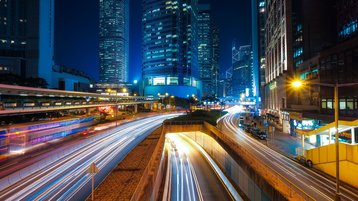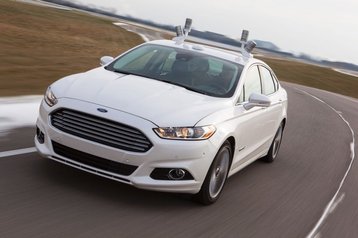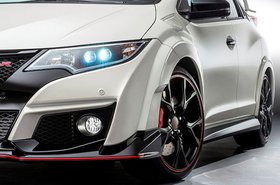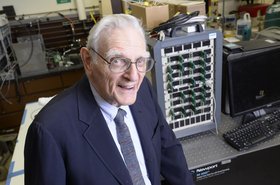Outsiders often view the transportation industry in a narrow, somewhat limited way. They might think of it as only related to public transportation or freight transport.
The reality is that transportation is an incredibly vast ecosystem that includes everything from varying modes of transport to the seemingly endless yet disparate list of uses, such as passenger or freight movement.
The transportation ecosystem is constantly in flux, and it is affected by things happening both inside and outside of its boundaries. Furthermore, a change happening somewhere within the industry may seem to only affect one particular area, when in truth it has a rippling effect on the entire industry.
Take self-driving vehicles and technology, for example. The most common use is for consumer-level vehicles, allowing for safer, more efficient travel for the average person. But that’s not the only place to use the technology.
Today, it is being considered for freight transport, rail and marine-based vehicles and even for on-site equipment such as people movers or forklifts.
With consistent changes happening, it’s more important than ever to stay in-the-know about current trends. An event or wave could influence the entire industry, so studying up-and-coming changes could mean the difference between failure or success.
Smart roads and infrastructure
Imagine a stretch of road that can detect collision points and warn nearby drivers in real-time. Or, what about a crossing bridge that can fold-up or open based on an automated detection system? Better yet, what about toll booths that control and operate themselves?
There are many different ways to use advanced, connected technologies. The future will be paved with smart roads and infrastructure, and that’s what is most important here.
A variety of sensors and data-collecting devices can get embedded directly within roadways and surrounding infrastructure. This information can then improve road conditions, inform first-responders or emergency vehicles, update active drivers and more.
Electric, hybrid and self-driving vehicles
Although they are lumped together here, the many forms of the modern vehicle each has its own uses.
Electric and hybrid-powered vehicles, for example, help cut down on fuel consumption which lowers operating costs and serves the environment much better. Self-driving vehicles, on the other hand, remove human laborers from the equation thus boosting safety, efficiency and lowering costs.
All of these types of vehicles are becoming more prevalent, and it’s happening simultaneously. Companies can move away from power-hungry fossil fuels, and also find safer, low-cost transport solutions through electric trucks and other vehicle types.
Retailers such as Amazon have already adopted self-driving transports, as have other providers such as the China Post. In addition, UPS is working on outfitting its fleet with electric vehicles to cut down on costs.
Smarter, more intelligent vehicles
Easily confused with self-driving vehicles, the smarter more intelligent ones have IoT and connected technologies. What this means is they are constantly collecting and reporting data about their operations and the surrounding environment. This is not only on a consumer-level either. Connected freight containers and entire fleets can get outfitted to improve logistics operations.
One vehicle might send information about traffic delays. Another might measure and report current weather conditions. Better still, information from a central system can get fed into a vehicle remotely to alter routes, choosing an optimal path.
The technology essentially allows transports, vehicles and fleets to become more aware and tuned-in to what’s happening around them. Within the next five to ten years, everyone should start seeing self-driving, smart trucks that incorporate both automated and more connected technologies simultaneously.
High-speed rail networks
Admittedly, high-speed railways are nothing new. But more people are adopting and considering the technology more openly — there are at least ten different high-speed rail networks in development within the US alone.
The technology can also be augmented with modern solutions. Take the Hyperloop, for instance, conceived by Tesla’s Elon Musk. It’s a high-speed underground rail that can travel at speeds of up to 240 miles-per-hour, and that’s just during early tests. The development team wants to achieve a top speed of three times that for the finished railway.
Not only are these projects growing in scope and capability, but they can do amazing things. With the Hyperloop’s reported speeds, travel will grow significantly faster even across continents.
3D printing
Believe it or not, 3D printing will have a profound impact on the transportation ecosystem as a whole.
For starters, the technology puts goods and manufacturing closer to the consumer, which means there’s less need to ship goods and supplies. That doesn’t mean transport and freight processes will get eliminated altogether. It just means that priorities will change. The shipment of raw materials for use in printing will become more prevalent.
Then, there’s the more direct impact of 3D printing on actual transportation vehicles and equipment. The technology can get used to print, build and manufacture certain parts, even entire vehicles. It lowers the production and maintenance costs of transport operations but also introduces a bevy of new opportunities.
Imagine a transport truck that includes an onboard 3D printer. It rolls up to the customer’s house, prints the good or item they ordered and drops it on their doorstep, like any other product. It's a form of instant, on-demand product delivery.
UAVs and drones
Many operations can use unmanned aerial vehicles or drone technologies, replacing conventional strategies entirely. Amazon is using drones to deliver packages to certain local areas. Beyond shipping, they can also help with inventory management, quick transport or delivery, surveillance and so much more.
Drones will have the biggest impact on on-demand freight and transport situations, largely due to their capable yet fast movement speeds through low-profile airways. This new technology delivers goods and supplies in shorter periods, and with much faster timelines. Think about ordering a product or part and having it delivered within the hour.
5G mobile networks
All of these connected, IoT devices and sensors need a reliable, accurate way to send data and information to a network. More importantly, it's not just about an intermittent connection but one that is always-on. Self-driving vehicles, for example, will need to remain connected to a central network as they constantly collect, transmit and process data.
5G mobile networks or the next generation of mobile connectivity will power a lot of this data facilitation, particularly when it comes to remote operations.
Scratching the surface
The trends listed here are not the only technological advancements or changes happening in the transportation ecosystem. Data analytics, the blockchain, robotics and even cloud computing will all have a significant impact on the future of the industry.
As for the impact on the world at large, these changes are all primarily positive and will result in more efficient, more streamlined infrastructure, logistics and transport processes.
Not only will enterprise and business markets prosper, so will everyone else. The implications and possibilities are truly wondrous.





